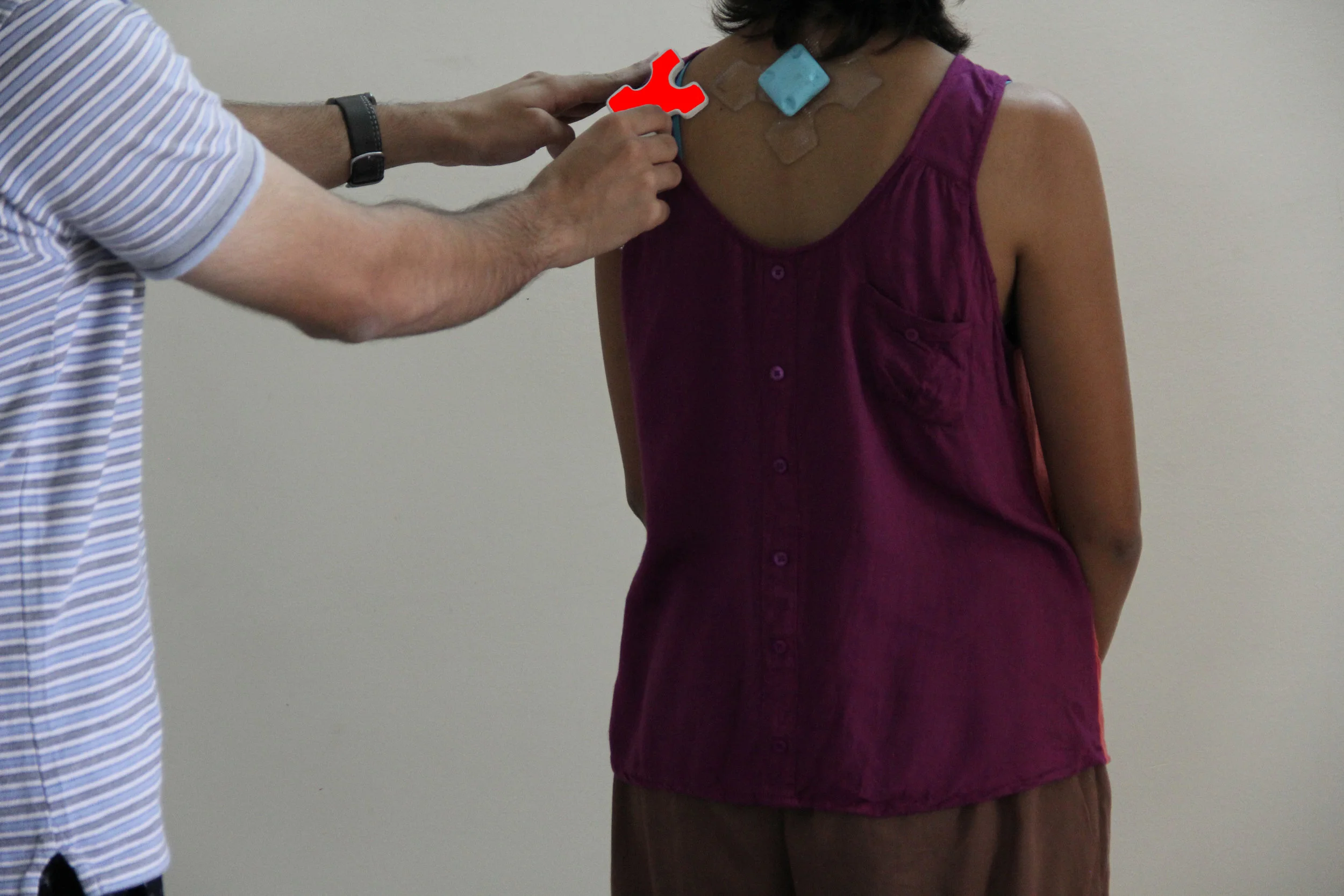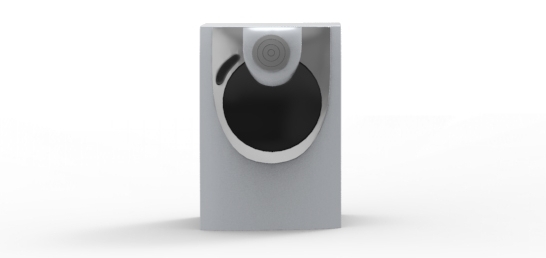Project Overview
The project aimed to develop a design space for the various forms displays of personal informatics can take as they become embedded in a person’s social and physical environments. The intention was to explore and push the boundaries
of what could be possible beyond the screen dominated world; focused on displaying the information about the activity of walking as it unfolds in urban India.
Inspiration
Insights from primary research about walking revealed posture as a key attribute to monitor.
Proposed Solution
The user would receive immediate feedback to correct their posture via the
silicone patch embedded with skin-mountable electronics (sensors and vibrators).
This design space delves into supporting collaborative exploration of self-monitored information through varying degrees of proximal interaction based on the level of personal interaction between the partner and the user. The scale moves from most intimate to least intimate.
The posture change would be tracked every 30 seconds and this data would be transmitted to the partner’s portable display device (e.g. key-chain) in a cumulative manner. The cumulative color change would monitor the posture progress by the minute. The pair could then share their reflections through 4 of the possible interaction scenarios.
Tracking physiological change
Immediate haptic feedback to the user, and visual data sharing
with the motivational partnerCreating an interpersonal interaction while opening a dialogue
between user and partner
The user and the partner face each other a foot away. The partner wears the user’s patch. The posture data is compiled in the patch to observe the major areas of error.
The partner then receives this data through haptic feedback. They then conveys the stress area/area of error to the user through actions. They both work together to fix the area.
The user turns their back to the partner. The patch is embedded with directional sensors to detect the location of the keychain in relation to itself.
The two devices work in sync while the keychain is moved around on the user’s back. The color displayed on the keychain would change when it is placed on a major error area.
The patch and the keychain are kept on a flat table. The directional sensor in the patch would detect the location of the keychain on the table with respect to itself. The two would work in sync to display change in posture by the minute at any given time.
The keychain would function similar to the hands of a clock. The colour change would represent the posture progress at the ‘time’ at which
it is kept.
The texture pad would be activated when the keychain and patch are in close proximity. The keychain would wirelessly transmit the posture change data of the day to the texture pad.
The texture pad would then display the data through change in texture based on an hourly timeline.
This concept was developed through a process of design research, ideation, and iteration. Further details
can be found in the project documentation book.
Watch a concept video to learn more about how the Posture Patch would work.

























